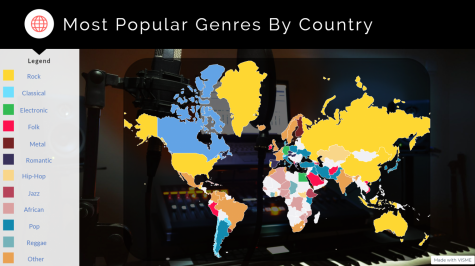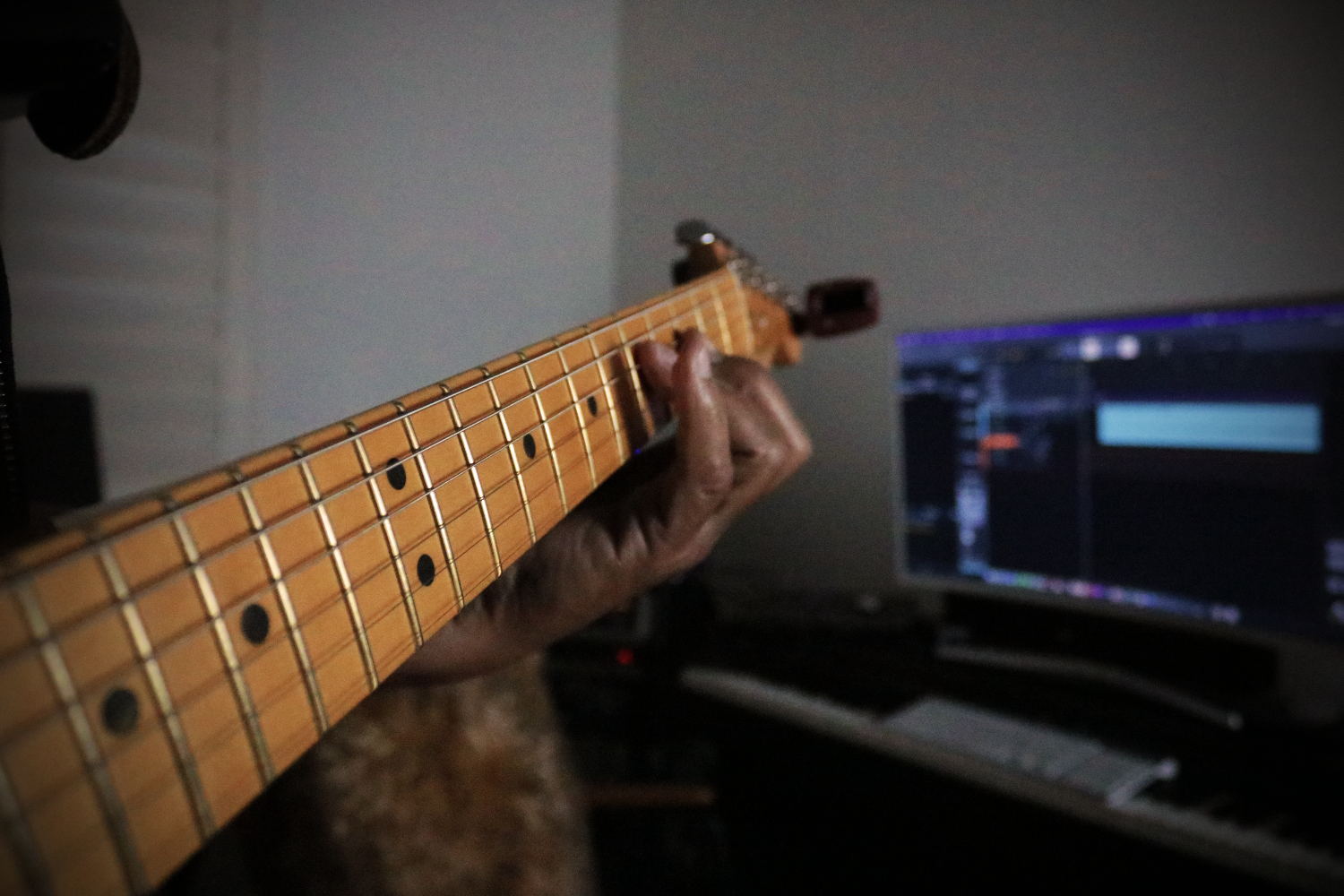Music has been a treasured medium for all kinds of people of all backgrounds. Over the past century, it has undergone the most change in human history.
These changes come from various movements and technological advances that made learning, recording, and producing musical talent more accessible, and at the same time, more challenging than ever.
In the early 1900s, modern-day music was first developed through upbeat jazz at various clubs with an air of nostalgia. The 1930s were the best example of this time through both song and dance. It was often an escape for people, with depictions of cigarettes and alcohol throughout the period.
“I think that there was a lot of romance music,” 76-year-old Terry Wykowski said. “I asked my mother about it as a little girl, and I remember she would say, ‘love makes the world go round.’”
As this time came and passed, a new era came, giving way to crucial scientific discoveries, such as the synthesizer and the television.
According to gilderlehrman.org, a large part of the musical revolution originates more prominently later in the 1960s. With America leading the entertainment industry, prominent anti-war campaigns and civil rights movements became a large part of the media. In particular, the civil rights movements led to the uprising of many African American genres such as blues, jazz, soul, and eventually hip-hop and funk, which stood as the basis for the genres observed today.
New technology, such as noise reduction systems, cassettes, and 8-track recorders were all advancements that followed being improved on time and time again, serving to benefit artists that stood out. Even with these new forms of production and the ability to record music, it was nowhere near universally accessible and would stay that way for a while.
“People who wanted to get their music out, they had to fight hard to get into a studio. They had to know someone and work their way in to get everything recorded,” Wykowski said.
At this same time, rock and soul music were both making their debuts as more emotional music, primarily due to the nature of the era and current events.
Another new way for people to get attention was through television, where people could put out their talent for the world to see on various channels.
“In New York, they had a TV show called ‘The Original Amateur Hour,’ which was like ‘So You Think You Can Sing’ or ‘America’s Got Talent,’ and they sent Glady Knight to that show where she was discovered, and she became a very famous singer,” Wykowski said.
Soon, however, the purely analog period, used to describe instruments that were not altered digitally, was coming to a close. The age of rock and hip hop rose. Advancements in the music industry formed the foundation of digital music production.
The 1980s were the most influential time on the technological aspect of music and gave rise to mass production and midi instruments. Rock and R&B were heavily praised for their unique feel through the transition into the digital age.
“I remember Elvis Presley had a band, and there was a recording studio called Sun Records. He would go in there and just play and sing and there was nothing going on other than the analog instruments and the recording,” said Niel Douglas, an 82-year-old senior and classical Music enthusiast.
In a study conducted by The Royal Society, statistics show the era had newfound popularity in bright, upbeat music. This also signifies the rise of disco music, which was primarily produced electronically.
This age also gave way for CDs to replace records and cassette tapes. Furthermore, as computers were normalized, piracy was on the rise. According to MUSOs global piracy report, it was such a problem that piracy would not be as bad as it was in the 1990s until 2017.
It was also significantly harder to get noticed. As technology improved, so did the cost of studios and the equipment required.
“The technology that I was using was called a Feralite computer, which was the first musical computer,” said Local Professional Music Producer Mars Lasar. “That machine itself was $70,000, and people were selling their homes to buy one of these things.”
As the ball dropped on New Years in 1999, and everyone cheered the end of a century, new inventions centralized and made music easier and easier to access.
For example, the iPod drastically changed the way people listened to music and became much more personal.
As pop culture increasingly developed, so did the trend of more aggressive music, according to the same study by Royal publishing.
In another study by NCBI, the percentage of those with no contacts were now three times more likely to experience mental health issues than they were in the 1970s. Along with this, the rebellious nature that became a widespread form of expression led to the aggressive music that teens comforted themselves with.
“I think rap music is so realistic and so heartfelt; I think it is very reflective of the growing times. It’s very earthy, it’s very authentic, and it’s very genuine. It’s an understanding of the younger generation who’s having a hard time rising above various problems. I think it’s harder today to climb economically,” Wyokowski said. “It was a chance for ordinary people to become famous.”
With a new medium of self-expression and the rising popularity of rap, people began to reflect the modern-day issues, which had previously gone unaddressed by romanticism in earlier eras. Statistics by The Data Face show that 27.1% of the top 100 singles were rap and hip-hop.
Another popular genre was EDM due to the new need for electronically produced music, paired with the vast array of digital sounds and instruments readily available. People were eager to try out all the things they could not do with older interfaces.
However, with the new mass accessibility to create music, it became far harder to stand out, and music became less personal.
“It just seems as if there’s an awful lot of people that are doing music at a very high level,” said senior, Jim Wykowski. “I think it can be quite hard to distinguish yourself. You have to do something very unique or innovative or do something that people can latch on to.”
Even so, the new amount of tools was mind-blowing to those who used them.
“What it’s done is allowed people who were restricted before to be unrestricted, to be able to go into all these places they were never able to before. So the creative exploration today is unbelievable. We only dreamed of these tools back in the 1980s,” Lasar said.
These new tools allowed people to create music that was never possible earlier on, and creating something unique was more manageable, which helped foster alternative genres.
However, the ease of access to digital tools came with another price, piracy.
“People were taking mp3s, putting them on hard drives, sharing hard drives and putting them into mobile devices, and the entire music business tanked in one year. People were listening to music too, but what’s even better is it was free, everyone was stealing it. Even now, people can listen to everything I have for free,” Lasar said. “But today, I’m okay with it. It’s nice that people care enough about it.”
In a study by The Chinese University of Hong Kong in 2008, iPod users between the ages of 13 and 19 had an average of 800 illegally downloaded songs. Torrent sites and illegal downloads became routine and impossible to maintain.
As the excitement died down, the early 2010s made room for the discoveries and ever-improving technology to set in. With this came a new genre of music: modern-day pop.
Pop took over 40% of the top 100 in 2011, according to The Data Face. The last time it had seen popularity similar to this was in 1989. The digital age created a better way for expression, and it was far less harsh than the 2000s.
The nature of the genre helped people spread messages about current events or problems that were generally harder to get out. The increasing accessibility to places to put music out, such as social media and free tools like GarageBand, have made it easier than ever for people to put their names out.
“My granddaughter, when she was about 9 or 10 years old, started using GarageBand on a smartphone to lay down tracks for her voice, and she wrote songs for herself. She now has an Apple laptop with the proper programs, and it’s pretty amazing what you can do with it,” Douglas said.
Today, the music industry is more significant than ever. Platforms like TikTok, Spotify, and SoundCloud make it both easier and more challenging than ever to make a name for yourself.
It took a long way to get to where music is now, and this is only a small chapter in what’s to come for the future of music.
“It seems like the most prolific style today is currently being created,” said Lasar. “We went through a period where we didn’t know where we were, but it seems we’re coming up on the next generation of genius.”




